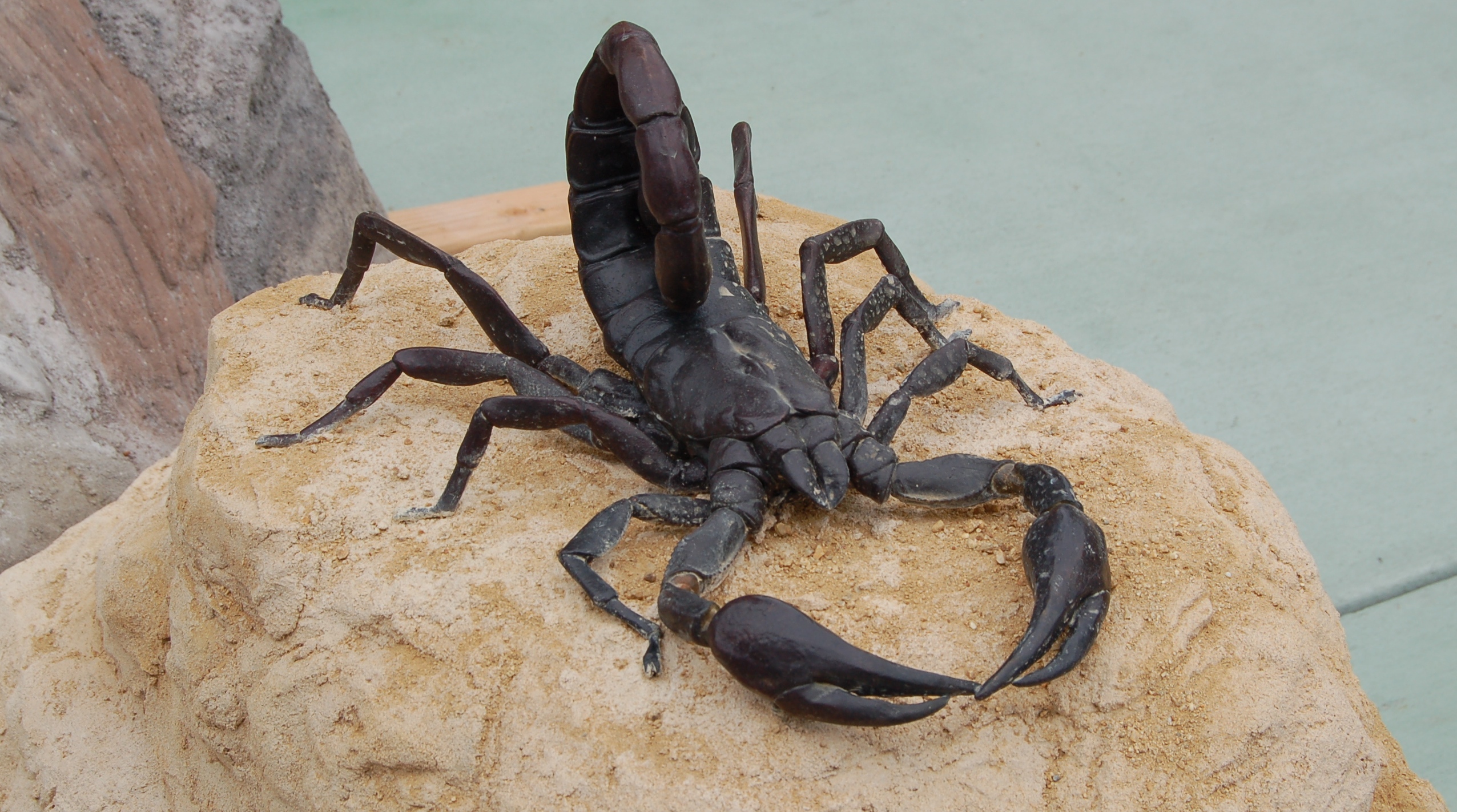Scorpion
Order Scorpionus

Fascinating Facts
- Some species can change their metabolic rate, allowing them to live on one meal per year or survive being stored in a freezer overnight.
- Scorpions are fluorescent under UV light – no one yet knows why!
- There are almost 2,000 scorpion species, but only 30 or 40 have strong enough poison to kill a person.
- Predators include centipedes, tarantulas, lizards, birds (especially owls), shrews, grasshopper mice, and bats.
- Scorpions give live birth to 24-35 young that climb onto their mother’s back in pairs, where they stay until their first molt.
Habitat/Diet
Scorpions are found in a wide range of habitats, the only necessity being soil. They are most common in deserts but can also be found on plains and savannas, and in forests, rain forests and caves. They are nocturnal carnivores, eating primarily insects and occasionally small vertebrates. Each species’ venom is tailored to their prey.
Status in the Wild
Seychelles forest scorpion – Critically Endangered, IUCN 2014
Seychelles giant scorpion – Vulnerable, IUCN 2014
All other species not yet assessed by IUCN
Range
Found on all major landmasses except Antarctica
Location in the Zoo
Invertebrates Zone of the Sculpture Learning Plaza
